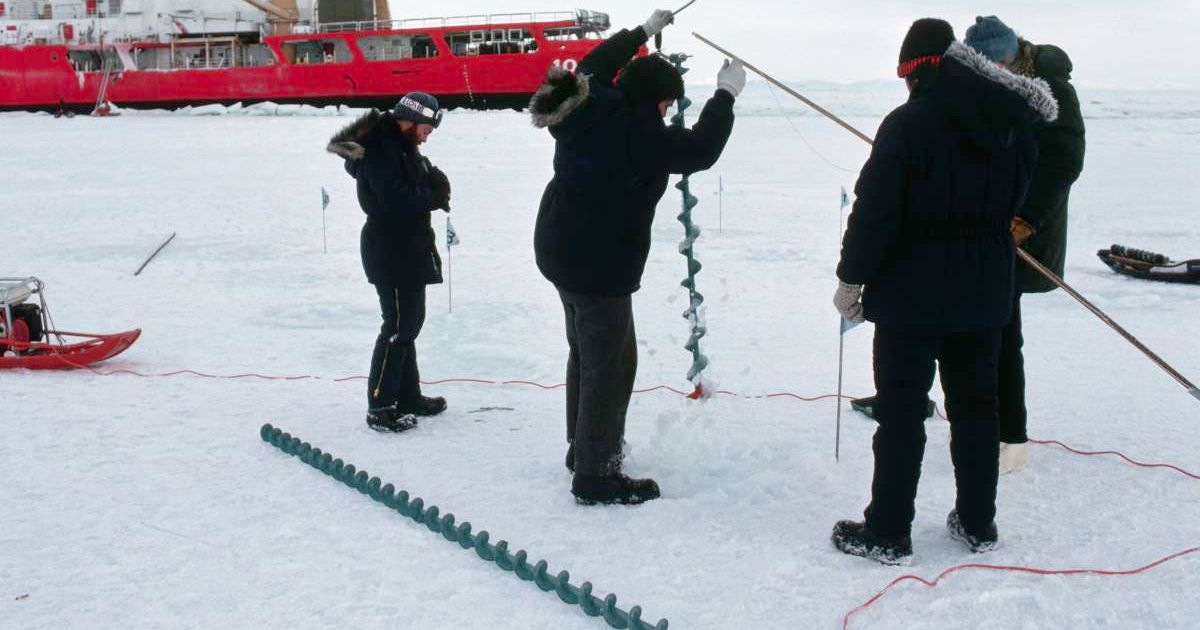Scientists Discover Complex Lifeforms With Surprising Abilities Hidden Beneath the Arctic Ice

In recent years, melting ice in the Arctic region has revealed several fascinating discoveries that have been reshaping our understanding of the existence of life in extreme conditions. Scientists and researchers have found hidden ecosystems, ancient microbes, and different kinds of bacteria in the region. In one such discovery, an international team led by the University of Copenhagen recently came across a thriving community of nitrogen-fixing bacteria beneath the thick Arctic ice sheet. This shows how melting ice is not just transforming the landscape but also revealing complex ecosystems that have remained hidden for a long time. While melting ice is usually seen as a disaster, scientists say it also creates space for algae to grow.

As reported by Science Daily, algae provide food and energy to countless marine species, but their growth depends on nitrogen. While nitrogen was once believed to be a nutrient that was found in limited quantities in the Arctic waters, with the recent discovery, scientists claim that the bacteria may help produce more nitrogen than previously thought. This, in turn, might also affect how much carbon the ocean can capture. The findings of the research were revealed in a study titled, ‘Nitrogen fixation under declining Arctic Sea ice,’ which was published by the journal Communications Earth & Environment.

Nitrogen fixation is a complex process that takes place when special bacteria, the so-called non-cyanobacteria, change nitrogen found in the seawater to ammonium. This helps the bacteria grow and also feeds algae, indirectly supporting all the other sea life. As reported by Phys, one of the lead authors of the study, Lisa W. von Friesen, spoke of the discovery and said, "Until now, it was believed that nitrogen fixation could not take place under the sea ice because it was assumed that the living conditions for the organisms that perform nitrogen fixation were too poor. We were wrong."

Researchers found that these nitrogen-fixing bacteria are most active near the edges of melting ice, as the environment is ideal for their growth. While they can also survive deep beneath the ice sheet, the process is much more efficient at the edges. Therefore, as these melting zones expand, even larger amounts of nitrogen are expected to be produced. Lisa said, "In other words, the amount of available nitrogen in the Arctic Ocean has likely been underestimated, both today and for future projections. This could mean that the potential for algae production has also been underestimated as climate change continues to reduce the sea ice cover."

Meanwhile, an increase in algae will also lead to more photosynthesis, allowing the ocean to absorb higher levels of carbon dioxide. Another senior author of the study, Lasse Riemann, spoke of this and said, "For the climate and the environment, this is likely good news. If algae production increases, the Arctic Ocean will absorb more CO2 because more CO2 will be bound in algae biomass. But biological systems are very complex, so it is hard to make firm predictions, because other mechanisms may pull in the opposite direction."
More on Green Matters
Here's What Will Happen, if the Arctic's Ice Caps Actually Melt
Observers Believe the Arctic's Ice Could Be Completely Gone Within a Few Decades
Forever Chemicals Are Leaking from Arctic Ice and Affecting Native Species